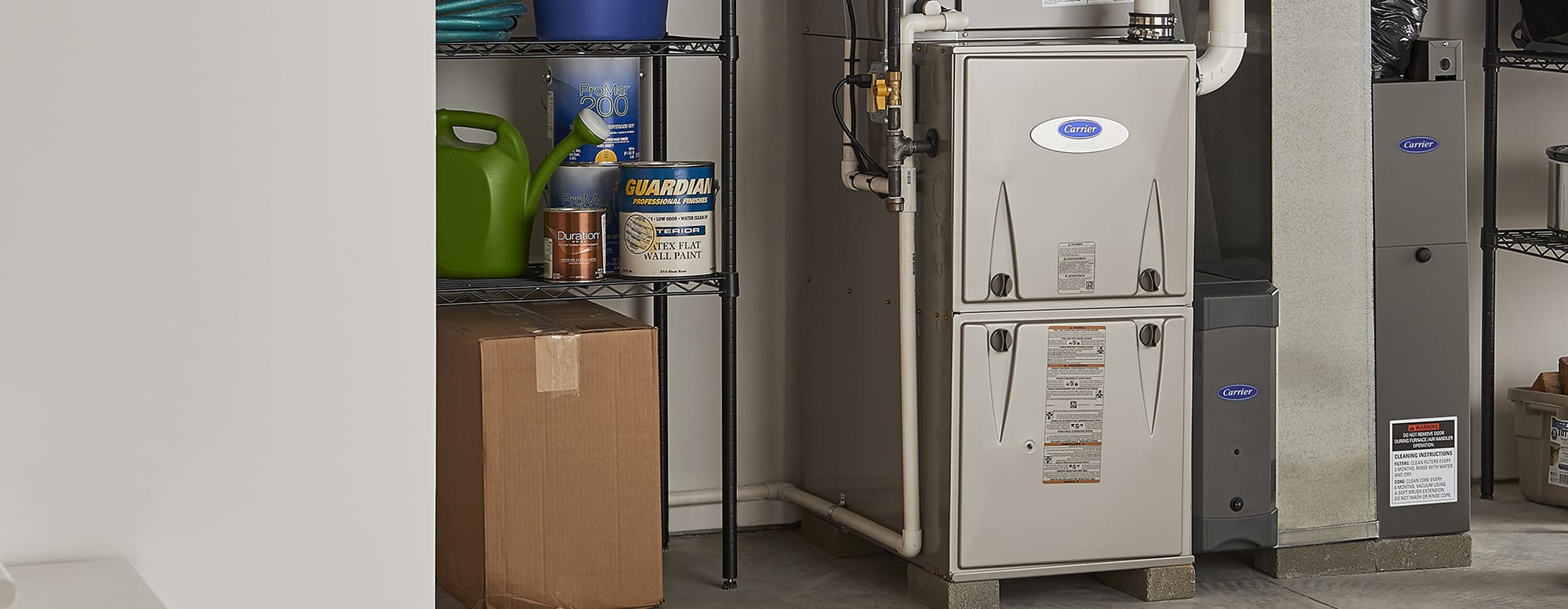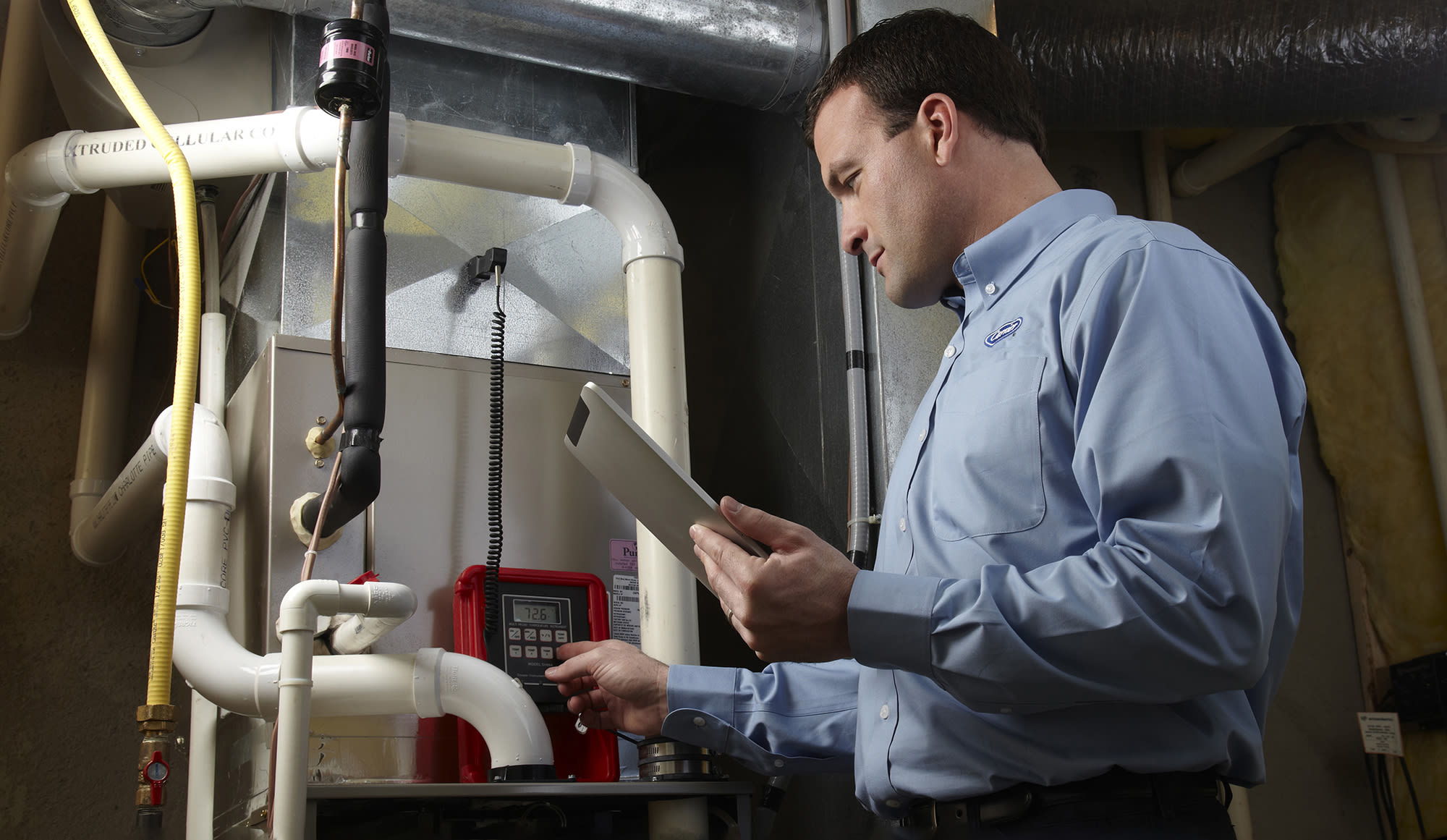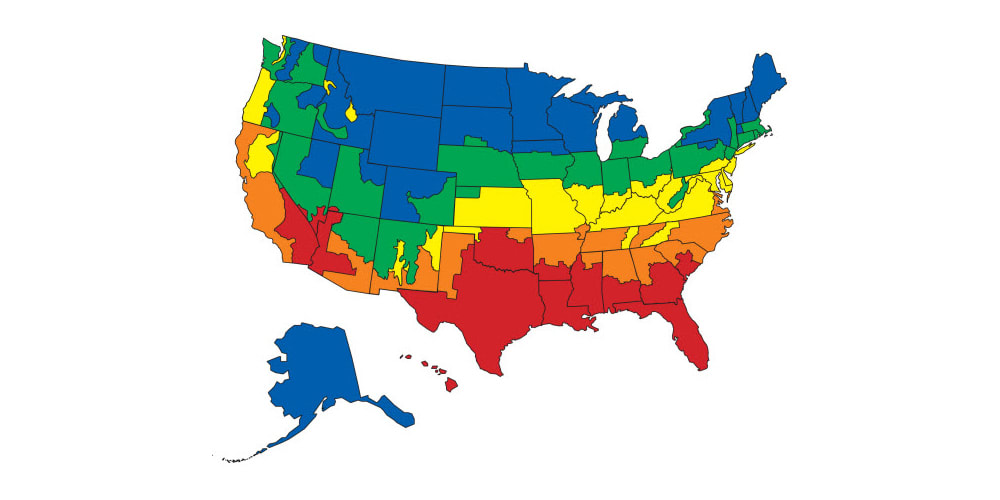how to calculate what size furnace i need
What Size Furnace Do I Need
Furnaces come in all shapes and sizes, making the question "what size furnace do I need?" a fiddling more complicated than but picking between minor, medium or big. And while it might be tempting to simply ask your dealer to super-size it, the get big or become home mentality isn't the correct arroyo to maximizing the comfort and efficiency of your dwelling house heating arrangement. Calculating furnace size is essential. The foursquare footage of your house is vital to roughly approximate the furnace size but isn't the only factor that has to be considered when ownership a furnace.

Whether it operates on natural gas, propane, heating oil or electricity, a forced-air furnace warms up a heating chemical element or estrus exchanger inside the furnace when the domicile thermostat signals a need for rut. An internal blower or fan pulls air into the furnace where information technology absorbs heating energy as information technology passes across the heat exchanger cells. The blower fan simultaneously forces the newly heated air through your dwelling house's ductwork and out into your living areas. A properly sized furnace for your home has plenty heating capacity, equally measured in British thermal units per 60 minutes (BTU/h), to provide heating comfort throughout your home.
Accurate sizing is important for comfort, energy efficiency and the lifespan of the heating and cooling system because:
- An oversized furnace heats the space quickly, causing it to bike on and off too ofttimes. The abiding on-off wheel is inefficient, can drive up operating costs, and can add wear-and-tear to cardinal components which can potentially shorten furnace life.
- An undersized unit will not adequately rut the home and will run continuously, which can waste energy and money.
The size of your home and weather in your area are two of the most important factors to consider for properly calculating furnace size, but there are many other variables to consider. For an accurate bookkeeping of all of these parameters, make an engagement with a reputable Carrier furnace dealer. In one case your local Carrier dealer has assessed your furnace sizing requirements, they will have a comprehensive selection of furnaces to all-time match all of your needs.

How are New Furnaces Rated?
Furnaces are rated according to their efficiency every bit expressed in terms of AFUE, and as well according to their "size," or heating output capacity, every bit expressed in BTU/h. When the subject, "how big a furnace practise I need" comes up with your local Carrier HVAC expert, it is usually in reference to its BTU rating. BTU stands for British thermal unit and represents the corporeality of oestrus needed to heighten one pound of h2o i⁰ Fahrenheit. Furnace size or capacity is expressed in BTU/h, or the corporeality of British thermal units the furnace tin generate per hour.
Choosing the correct size furnace for your home is important because an undersized furnace won't generate enough heating capacity to go on your home warm. It will run constantly to go along upwards with need. An oversized furnace will frequently plow on and off because it is supplying too much heat, which creates uncomfortable, up-and-down temperature swings and reduced efficiency. Your local Carrier dealer is experienced at computing furnace size and will practise what'due south called a "load adding" to determine the size most appropriate for your home. Typical residential gas furnaces will be available in various sizes between 44,000 BTU/h and up to 120,000 BTU/h.
Agreement Furnace Efficiency Ratings
Once your Carrier dealer has completed a load calculation to determine the proper size furnace for your habitation, you still have decisions to brand. That's because ii furnaces with the same heating capacity tin can have different efficiency ratings. Furnace efficiency ratings are expressed in terms of AFUE per centum and will be displayed on the furnace with the yellow Energy Guide label. AFUE stands for "annual fuel utilization efficiency". Furnace AFUE represents the percentage of heating free energy from the fuel source that is converted to oestrus your dwelling. It is calculated by taking into account the furnace's total heating output over a yr'due south time in human relationship with the corporeality of fuel used over the same amount of time.
Dissimilar heating fuel sources take slightly different requirements, but natural gas furnaces, the nigh commonly used beyond the United States,[1] are required to evangelize a minimum of 80% AFUE. The highest percent efficiency models can achieve as much every bit 98.5% AFUE. When looking to purchase a furnace, yous can identify the higher efficiency models by looking for the ENERGY STAR® logo. ENERGY STAR standards are slightly different for each fuel source. For more data on how Carrier high efficiency furnaces tin can assist salvage money on operating costs compared to lower efficiency models, while too providing enhanced efficiency benefits, visit our dedicated loftier efficiency furnaces page.
Additional Factors to Consider
An experienced and reputable HVAC contractor will perform a load calculation to accurately determine the correct size of furnace for your home, mayhap post-obit guidelines from the Ac Contractors of America (ACCA®) or the American National Standards Found (ANSI®). Equally a rule of pollex, the number of square feet in your home volition be used, along with the BTU furnace rating, and boilerplate outdoor temperature in your area. However, there are additional factors that should be considered, which include:
- Home insulation in attics, roof and walls
- Additional oestrus-generating sources such as wood-burning stoves and fireplaces
- Quality of ductwork
- Number, size and location of windows and doors
- Orientation of home, number of "exposed" walls
- Open floorplan vs. many isolated spaces
- Climate zone
As you may accept noticed, not all of the factors involved are a matter of getting out a record mensurate and jotting down some dimensions. There will be a bit of estimating that goes into a load adding, and that's another reason why selecting an experienced HVAC contractor makes so much sense.

Contact a Professional
When searching for a contractor to answer the question "How big of a furnace practice I need?", don't merely randomly select any dealer. Get with a trusted recommendation, or observe a Carrier furnace dealer in your surface area using the Carrier dealer locator. Not just will you lot become a professional assessment of your dwelling house's heating needs and load requirements, you'll take admission to a comprehensive line of Carrier furnaces designed to fit nearly any of your home heating challenges.
-
https://www.energy.gov/energysaver/heat-and-cool/home-heating-systems ↩
ACCA is a registered trademark of Air Conditioning Contractors of America Corporation.
ANSI is a registered trademark of American National Standards Institute, Incorporated.
Source: https://www.carrier.com/residential/en/us/products/furnaces/calculating-furnace-size/
0 Response to "how to calculate what size furnace i need"
Post a Comment